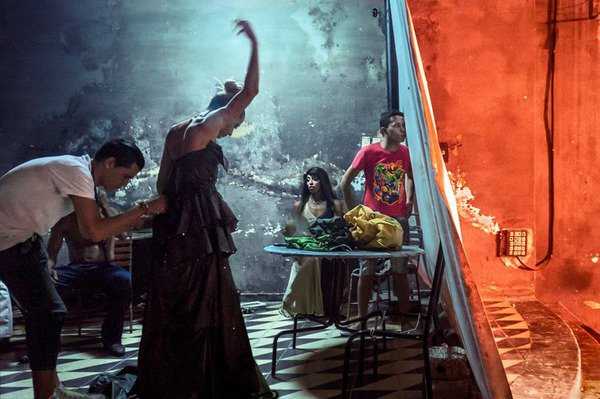The Light in Cuban Eyes
dal 25/3/2015 al 22/5/2015
Segnalato da
Pedro Abascal
Pavel Acosta
Juan Carlos Alom
Jorge Luis Alvarez Pupo
Ramses Batista
Raul Canibano
Arien Chang
Donis Dayan
Reinaldo Echemendía Cid
Adrian Fernandez
Eduardo García
Alejandro Gonzalez
Glenda Leon
Kadir Lopez Nieves
Jose Julian Marti
Nestor Marti Liudmila
Rene Pena,
Alejandro Perez
Michel Pou
LeysisQuesada
Alfredo Ramos
Lissette Solorzano
25/3/2015
The Light in Cuban Eyes
Robert Mann Gallery (new space), New York
This will be the first New York exhibition focused on work made during and after Cuba's 'Special Period', the time of extreme hardship and poverty which followed the withdrawal of Soviet resources in the early 1990s.

On the heels of the Obama administrationʼs momentous policy changes regarding US-Cuba relations, Robert
Mann Gallery is pleased to announce The Light in Cuban Eyes, a group exhibition of contemporary Cuban
photography. This will be the first New York exhibition focused on work made during and after Cubaʼs “Special
Period,” the time of extreme hardship and poverty which followed the withdrawal of Soviet resources in the
early 1990s. The exhibition will feature works by artists including Pedro Abascal, Pavel Acosta, Juan Carlos
Alom, Jorge Luis Álvarez Pupo, Ramsés Batista, Raúl Cañibano, Arien Chang, Donis Dayán, Reinaldo
Echemendía Cid, Adrián Fernández, Eduardo García, Alejandro González, Glenda León, Kadir López Nieves,
José Julián Martí, Néstor Martí, Liudmila + Nelson, René Peña, Alejandro Pérez, Michel Pou, Leysis
Quesada, Alfredo Ramos, and Lissette Solórzano.
In Cuba, cultural richness clashes with economic destitution, pride chafes against frustration, and beauty
mingles with decay. From classic street scenes to metaphorical abstractions, traditional silver prints to the
newest inkjet technologies, each artist grapples in his own way with the countryʼs coinciding and contradicting
inherencies. Some, like Álvarez Pupo and José Julián Martí, capture unfamiliar moments of daily life in moody
black-and-white: a farmer provokes a rooster for a cockfight, and suited men conceal binoculars like guns
behind their backs. Quesada and García invoke more poetry in presenting Cubaʼs scenery, with monumental
waves crashing against a stony shore and white linens fluttering like peace flags above the city.
Others find indirect methods of artistic commentary. Acostaʼs bright, colorful portraits of old automobiles subtly
and wryly reference the Cuban governmentʼs prohibition of new cars and the peopleʼs ingenuity in
personalizing their ancient vehicles. With Manet-like black backdrops and sharp front-lighting, Fernández
comments on Cuban stereotypes by presenting exotic dancers as plasticine figurines. And some, like Liudmila
& Nelson and Batista, direct their statements towards Cubaʼs most enduring symbol—the body, joining and
struggling against the narrow sea. From this small island nation, these artists present divergent bodies of work
that pay tribute to the rich cultural history of their homeland while looking toward the future.
The exhibition is inspired by long-time patron of Cuban photography Madeleine P. Plonsker, who has been
traveling to Havana since 2002 to discover and support the work of emerging Cuban photographers.
Coinciding with the exhibition will be the release of the book The Light in Cuban Eyes, published by Lake
Forest College Press and organized by Plonsker. The Light in Cuban Eyes is the first North American
publication with support from the Cuban Ministry of Culture and Fototeca de Cuba, Cubaʼs repository of
photography comparable in function to the Smithsonian Photography Department in Washington, D.C.
Image: Alejandro Pérez, El Bohemio, 2014
Opening: Thursday, March 26, 6 - 8pm
Robert Mann Gallery
525 West 26th Street, Floor 2 / +12129897600 / robertmann.com
Mon - Fri 10am to 6pm



